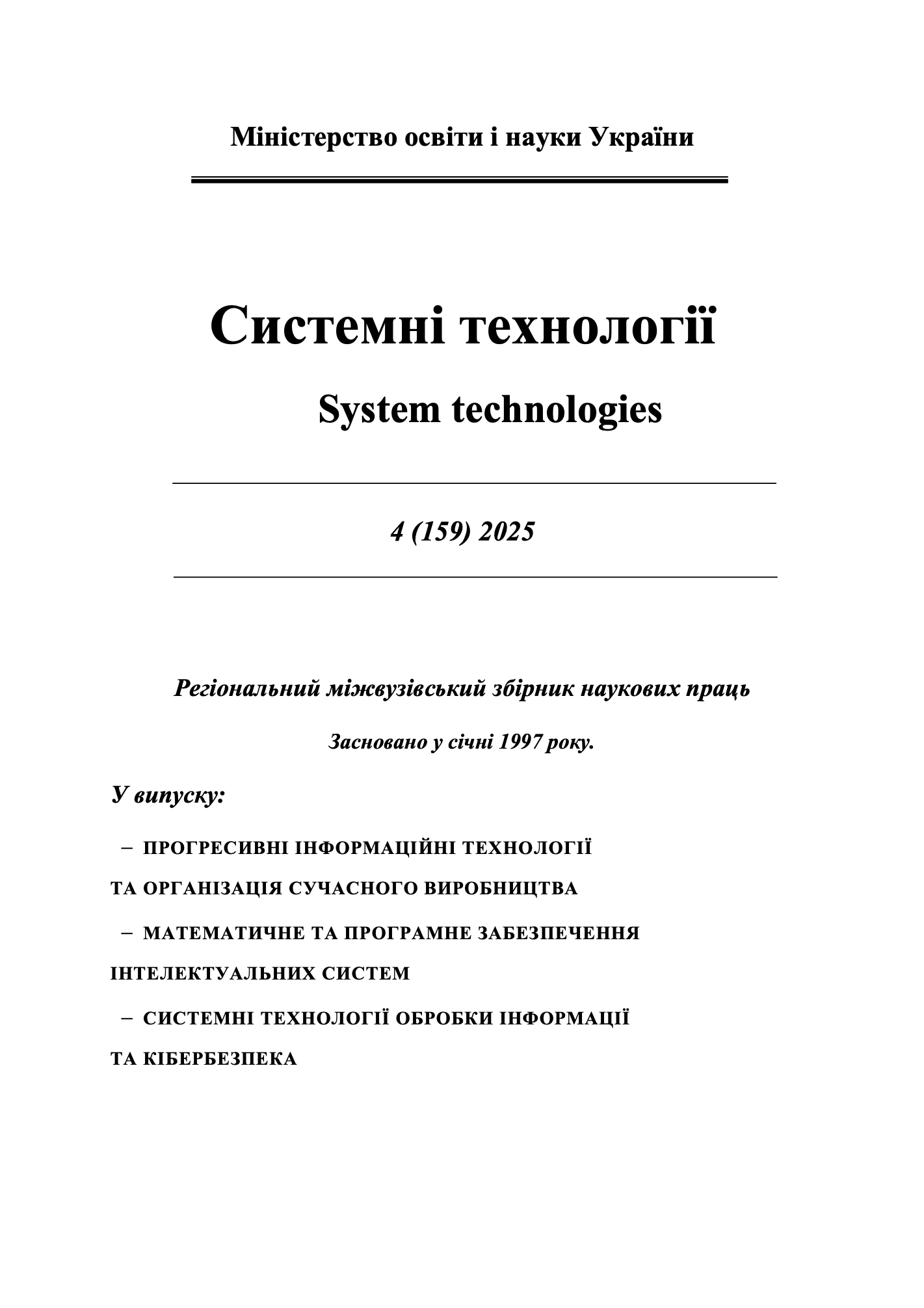Constructive-synthesizing modeling of recovery energy distribution based on fuzzy logic
DOI:
https://doi.org/10.34185/1562-9945-4-159-2025-20Keywords:
constructive-synthesizing modeling, direct current traction, formal grammars, constructor, fuzzy logic, software, information technologies.Abstract
This article is the last of three that collectively explore solutions to the problem of re-generative energy distribution for its rational use. The solution is achieved through construc-tive-production modeling. Previously, a general constructive-production model of a direct current traction power supply section was developed and enriched with information on the attribute values of its con-stituent elements. In this work, based on expert data, a system for managing the distribution of regenerative energy is formed using constructive-production modeling and fuzzy logic. The developed model allows the formation of a text file in FTL format, which is used in the fuz-zyTECH system. FuzzyTECH, in turn, implements fuzzy inference mechanisms, considering the state of electrical equipment and the current situation on the power supply section, to effi-ciently distribute regenerative energy by controlling switches at direct current power supply substations. This approach is illustrated using a schematic of a linear power supply section with three substations and two trains. The developed models open new opportunities for improving energy efficiency, particu-larly in railway and urban public electric transport. The primary tasks of the system include identifying the existing traction substation equipment and assessing its technical characteris-tics, as well as optimizing the use of regenerative energy. Moreover, the proposed approach can be useful for solving issues related to the design of traction power supply systems, en-hancing their reliability, and reducing energy losses. Additionally, the implementation of fuzzy logic methods and constructive-production modeling not only improves the management of regenerative energy distribution but also cre-ates a universal approach that can be adapted to other types of electric transport. The pro-posed system has the potential for integration with intelligent networks and modern energy-saving technologies, opening new perspectives for the development of efficient transportation solutions.
References
Shynkarenko V. I. Konstruktyvno-produktsiine modeliuvannia systemy elektropostachan-nia tiahy postiinoho strumu / V.I. Shynkarenko, A.I. Huda, O.I. Sablin, O.P. Ivanov // Sys-temni tekhnolohii. Rehionalnyi mizhvuzivskyi zbirnyk naukovykh prats. – 2024. – Vypusk 6 (155). – S. 145-158. [in Ukranian] DOI : 10.34185/1562-9945-6-155-2024-14
Huda А.І. Атрибутивне насичення конструктивно-продукційної моделі ділянки сис-теми електропостачання тяги постійного струму / A.I. Huda, O.P. Ivanov, V.I. Shynk-arenko, O.I. Sablin, // Systemni tekhnolohii. Rehionalnyi mizhvuzivskyi zbirnyk naukovykh prats. – 2025. – Vypusk 3 (158). – S. 96-109. [in Ukranian] DOI 10.34185/1562-9945-3-158-2025-10.
Sablin O. Rational distribution of excess regenerative energy in electric transport systems on the basis of fuzzy logic application / O. Sablin, V. Kuznetsov, V. Shinkarenko, A. Ivanov // The archives of transport, 42(2), 2017, 7-17. DOI: 10.5604/01.3001.0010.0527
Official fuzzyTECH product website. [Electronic resource] – Access mode: https://www.bssit.com/products_details.php?product_id=150.
Şen, M.; Özcan, M.; Eker, Y.R. Fuzzy Logic-Based Energy Management System for Re-generative Braking of Electric Vehicles with Hybrid Energy Storage System. Appl. Sci. 2024, 14, 3077. https://doi.org/10.3390/app14073077.
Ismail H. Altaş. Fuzzy logic control in energy systems: with design examples in Mat-lab/Simulink. 2nd ed, London: The Institution of Engineering and Technology,2024,254p.
Salleh, M.N.M.; Talpur, N.; Hussain, K. Adaptive Neuro-Fuzzy Inference System: Over-view, Strengths, Limitations, and Solutions. In *Data Mining and Big Data*; Tan, Y., Takagi, H., Shi, Y., Eds.; Springer International Publishing: Cham, 2017; pp. 527–535. https://doi.org/10.1007/978-3-319-61845-6_52.
Downloads
Published
Issue
Section
License
Copyright (c) 2025 System technologies

This work is licensed under a Creative Commons Attribution 4.0 International License.















